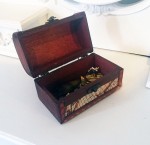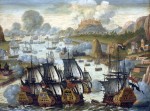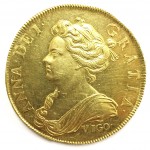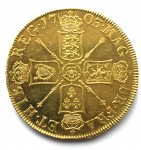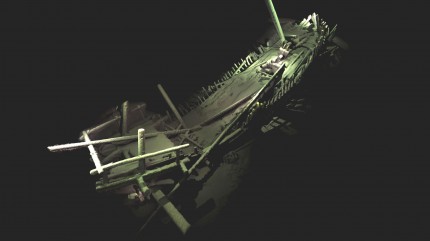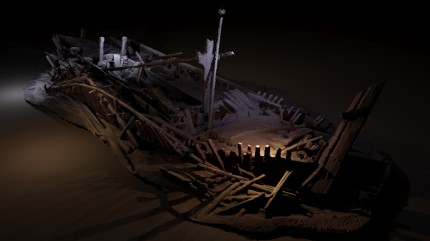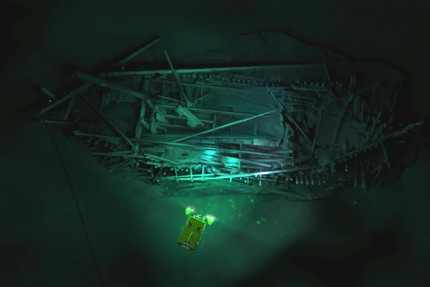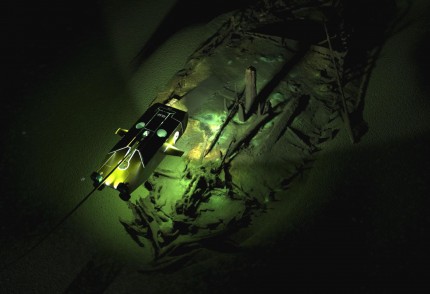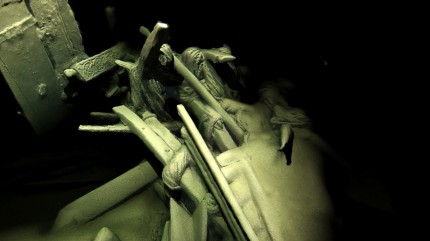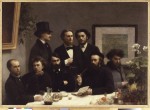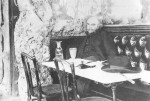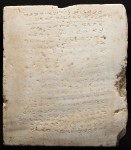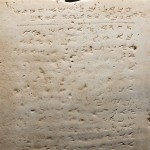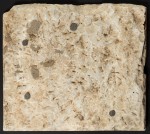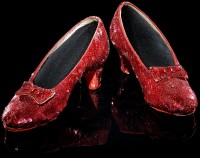 Last Monday, the Smithsonian’s National Museum of American History launched a crowdfunding campaign to raise $300,000 for the conservation and display of the Ruby Slippers famously worn by Judy Garland as Dorothy in the 1939 film classic The Wizard of Oz. The Smithsonian’s budget is sufficient to keep the Ruby Slippers relatively stable in their current condition, but they turned to Kickstarter for the money to conserve the shoes and create a custom state-of-the-art display case with light, temperature and humidity controls that will ensure the long-term preservation of one of the museum’s most iconic film artifacts.
Last Monday, the Smithsonian’s National Museum of American History launched a crowdfunding campaign to raise $300,000 for the conservation and display of the Ruby Slippers famously worn by Judy Garland as Dorothy in the 1939 film classic The Wizard of Oz. The Smithsonian’s budget is sufficient to keep the Ruby Slippers relatively stable in their current condition, but they turned to Kickstarter for the money to conserve the shoes and create a custom state-of-the-art display case with light, temperature and humidity controls that will ensure the long-term preservation of one of the museum’s most iconic film artifacts.
Costume designer Adrian made several pairs of Ruby Slippers for the movie. This pair was worn when Dorothy danced down the Yellow Brick Road, and their condition attests to their hard use. In 1939 (and for decades afterwards), costumes were made to last for the duration of shooting. Materials were chosen to look good at low cost. Adrian took commercial shoes, spray-painted them red and attached a red net with red sequins and beads. The red color of the sequins is a coating of cellulose nitrate lacquer. In the 77 years since the shoes were made, the color has faded given the slippers a muted, dingy look. The nitrocellulose coating is cracked and flaking. Threads stitching the sequins to the net are breaking. The red paint on the soles is cracking and the sole is coming apart from the top of the shoe. (See this interview with the conservator of the Ruby Slippers for more details about their complex conservation needs.)
The money raised would go to repairing what could be repaired (without ruining the original evidence of use because that is an important part of their history), but also towards researching how best to approach the conservation of materials like the sequin coating about which we know very little. That is essential to ensuring that the new display case is properly set to keep the Ruby Slippers in ideal conservation conditions.
 The response was to the campaign was huge and immediate. The goal was met and exceeded within a week, thanks to donations from more than 5,000 people from 41 countries on every inhabited continent. With another 21 days to go, the Smithsonian has added a stretch goal of $85,000 for the conservation and display of the patchwork Scarecrow costume worn by Ray Bolger in the movie.
The response was to the campaign was huge and immediate. The goal was met and exceeded within a week, thanks to donations from more than 5,000 people from 41 countries on every inhabited continent. With another 21 days to go, the Smithsonian has added a stretch goal of $85,000 for the conservation and display of the patchwork Scarecrow costume worn by Ray Bolger in the movie.
The Scarecrow will need a full conservation assessment to determine which materials were used to construct the costume. This will include working with scientists to identify the materials and conducting historical research. We will take a close look at the textiles and dyes that are extremely sensitive to light and wear. We need to understand what condition they are in to determine what treatment will best conserve and preserve them. Once those issues are addressed, we can decide how best to display the costume. The Scarecrow costume will need an internal structure to support the textiles and reduce stress so that he will remain in good condition far into the future.
As the Scarecrow is less glamorous than the Ruby Slippers, so far only $17,000 of the $85,000 has been raised, but we all know that if he didn’t get restuffed and spruced up so he could join the Ruby Slippers in a new exhibition gallery in 2018, Dorothy would miss him most of all.
[youtube=https://youtu.be/RByNkqi96CY&w=430]
